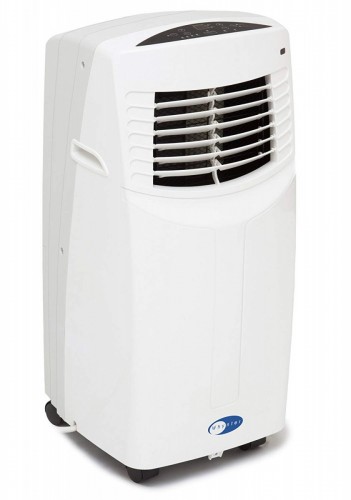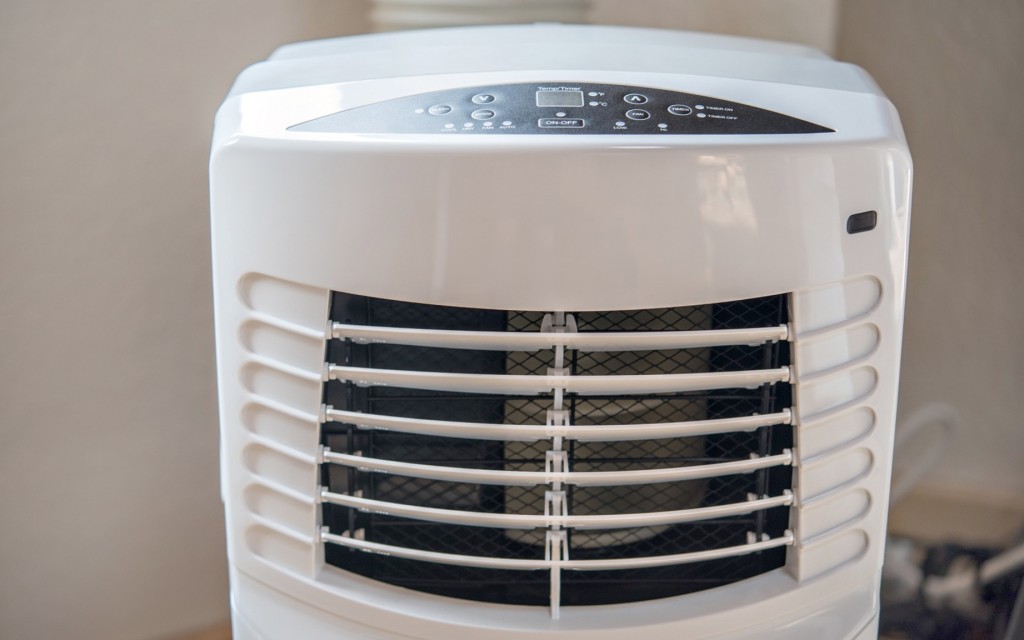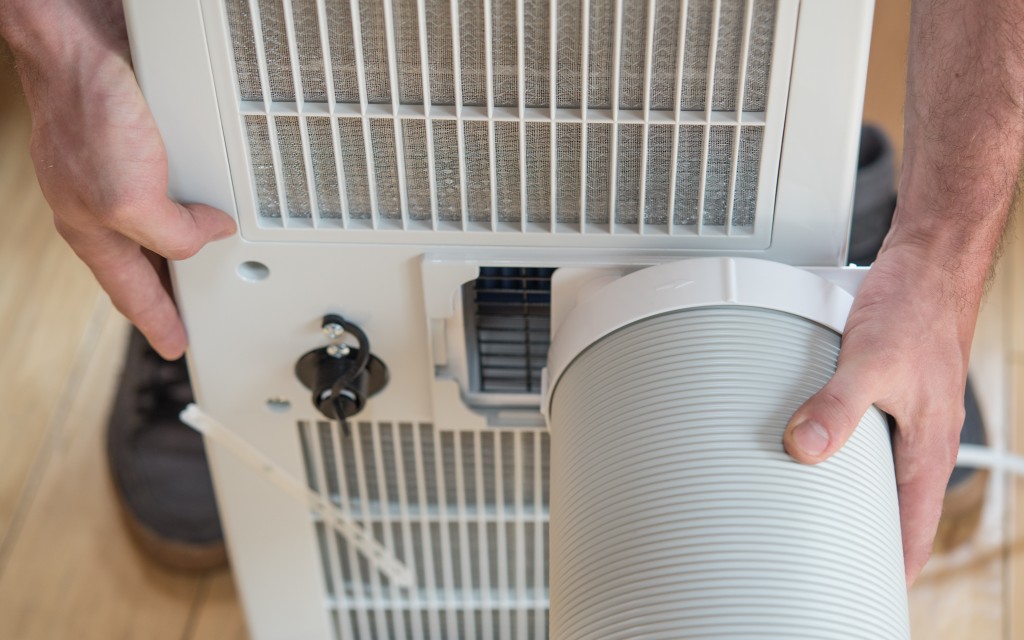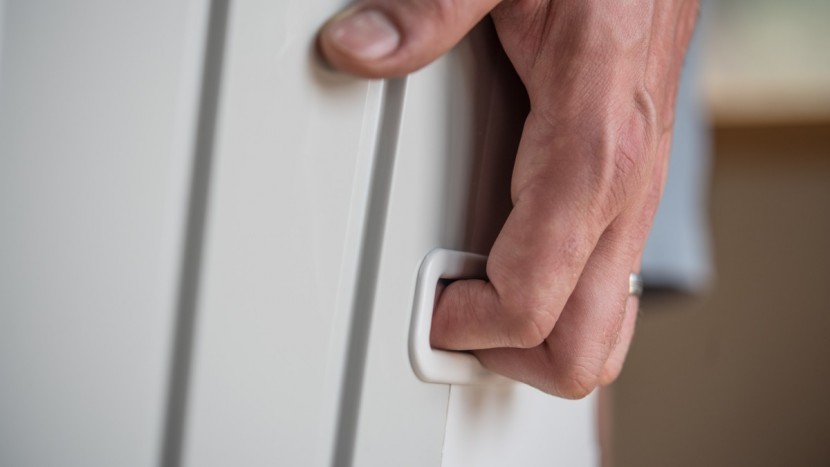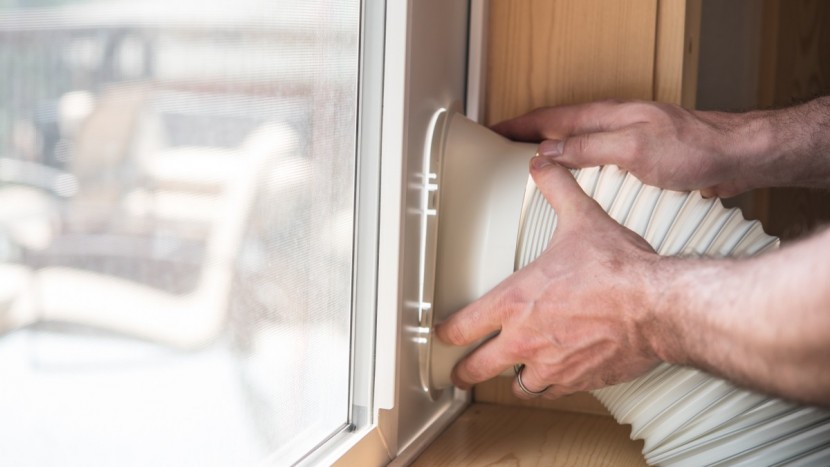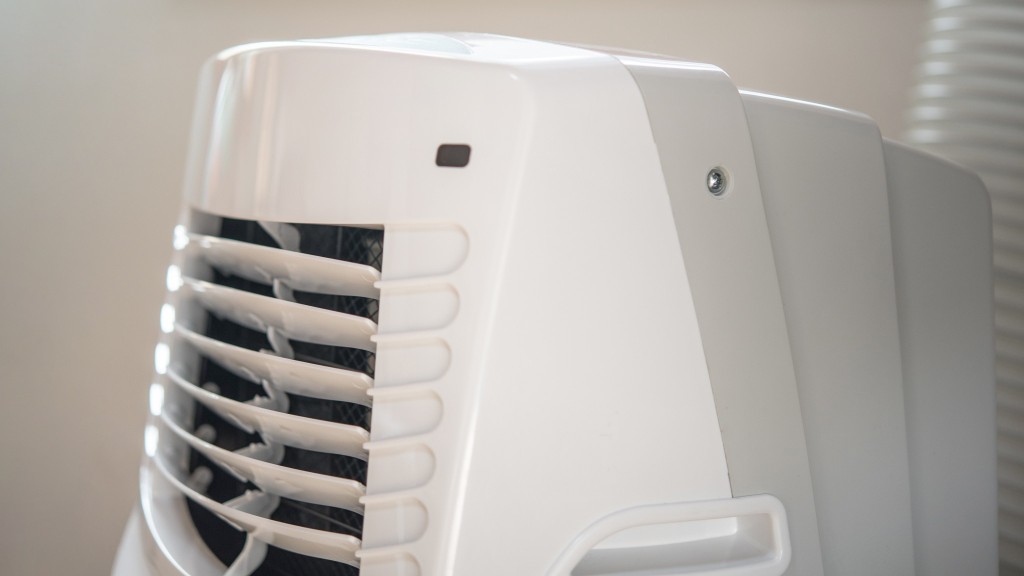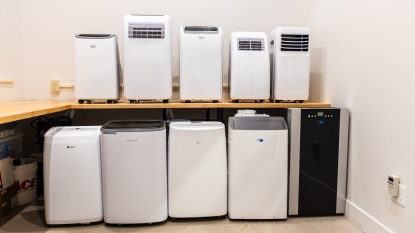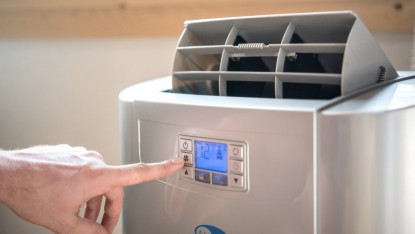Whynter ARC-08WB Review
Our Verdict
Our Analysis and Test Results
This model tied with the Whynter ARC-122DS Elite, both receiving one of the highest scores we have seen to date. The ARC-08WB is quite a bit more efficient, with a projected energy cost that is much lower for the same amount of usage, but it is significantly noisier, especially since the Elite is one of the quietest models of the entire group. These both performed comparably in our cooling test where the outside temperature was in the high 80's, but the dual-hose Elite would fare much better than the 08WB in the hottest climates. However, the Elite does retail for more than the ARC-08WB.
Cooling Power
Responsible for the largest portion of the total score at 40%, our cooling test is the most important one of them all. We used a set of space heaters to heat up out test room, then ran each A/C for an hour after we turned the space heaters and gave time for the temperature stabilized. The weather conditions were comparable for each test and the score for each portable air conditioner is based on the measured temperature drop. The Whynter ARC-08WB did decently well, meriting a 5 out of 10 for its performance.
This portable air conditioner dropped the temperature by 10°F after 60 minutes.
The bulk of this drop happened in the first 20 minutes, with a recorded temperature drop of 8.07°F at that point. Our test room was 161 sq. ft., so well within the 250 sq. ft. rating of this air conditioning unit.
Portability
Following our cooling test, we moved on to evaluating and judging the difficulty in moving these units around and installing them. We rated the rolling resistance, maneuverability, and difficulty of carrying each of these units, as well as how much effort it took to mount or unmount the window insert. While none of these products are incredibly portable — contrary to their name — the ARC-08WB is actually one of the most portable models that we have tested, earning it a 7 out of 10 in this metric, which is worth 25% of the overall score for each portable air conditioner.
This portable air conditioner is very easy to roll around on relatively smooth interior surfaces — the casters are a bit small for rolling it around on rougher or exterior surfaces, like asphalt. This unit also maneuvers quite well, though it can be a tiny bit squirrely when pushing in a straight line, occasionally swerving to one side or another.
If you are planning on moving your portable air conditioner up or down stairs, the Whynter ARC-08WB is also one of the easiest units to carry. It weighs in at 48.3 lbs., which may sound heavy, but is actually on the lighter side for these products.
The handles are also relatively ergonomic and are large enough to not cut into your hands while lifting.
However, installing the window insert can be a bit more of a task with this product. It's not terribly hard, but does require the use of a screwdriver to tighten the screws into the pre-drilled holes. The holes are drilled at fairly regular intervals, but it still gives you slightly less adjustability than the models that continuously slide.
This insert can range in size from 20"-46", which should fit most standard windows without issue. All in all, it usually took between 10-20 minutes to get the insert set up.
Noise
Next, we moved on to evaluating how loud each of these products are, as it doesn't really do all that much to cool a room to comfortable temperature if it is now too loud to actually enjoy it. First, we measured the sound level from 4' away using an SPL meter. Second, we had a panel of judges rate the tone of the sound each portable air conditioner to see if there were any that are particularly annoying. The performance of the ARC-08WB dropped considerably in this metric, earning it a 3 out of 10.
This portable air conditioner measured in at 60.3 dBa on high and 58.3 dBa on low, with the meter held out of the direct path of the fan. This makes it one of the loudest models of the group.
Our panel didn't notice any particularly unpleasant sounds with the exception of the exhaust fan. We found it sounded surprisingly loud — even louder than other models that measured the same on the SPL meter.
Energy Cost
For the final 15% of the total score, we compared the projected cost of running each of these units for an entire summer. The Whynter easily delivered the best performance, earning it an unparalleled 10 out of 10.
First, we used a wattmeter to measure and calculate the power consumption of this portable A/C on both its low and high setting. We then calculated the cost to run it for 90 days with an average electricity cost ($0.135 per kWh) and assumed that you ran it for 12 hours each day, 2 on high and 10 on low. This works out to the ARC-08WB projected to increase your power bill by $81.90, comparing very favorably with the rest of the group.
However, this number can vary wildly depending on your usage pattern and local utility rates, but this unit should always be one of the least expensive to operate.
Value
Overall, this portable air conditioner is a fantastic value. It's highly efficient to keep your power bills low and offers some of the best bang for your buck.
Conclusion
If you are looking to save a little cash when shopping for an A/C, you should definitely consider this model first. We'd recommend this model to almost anyone, with the exception of people who live somewhere where it is incredibly hot for the majority of the year and would be better served by a dual-hose model.


